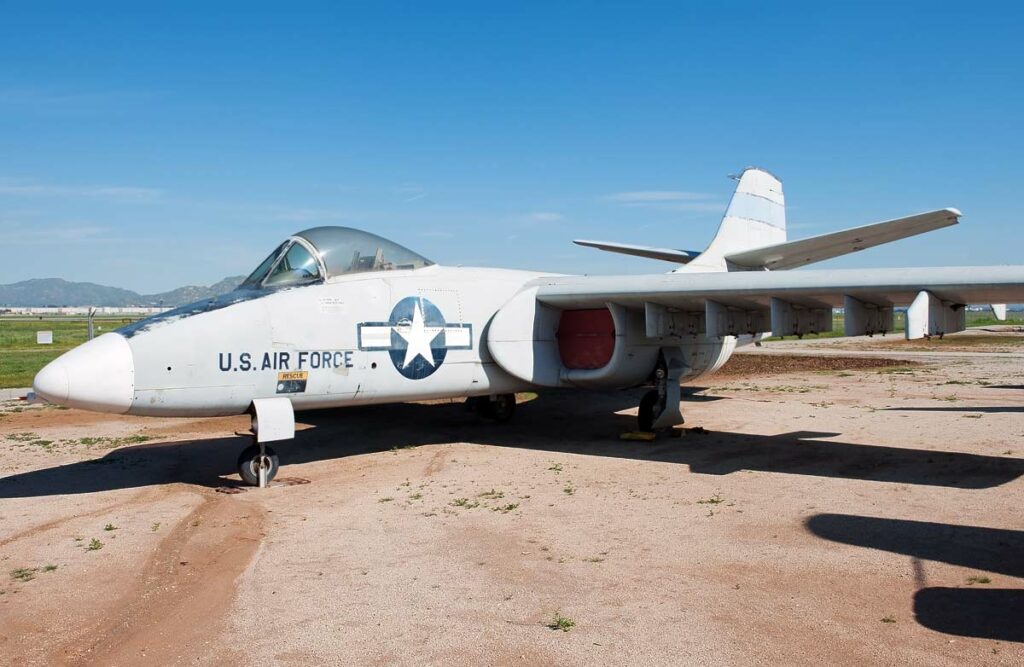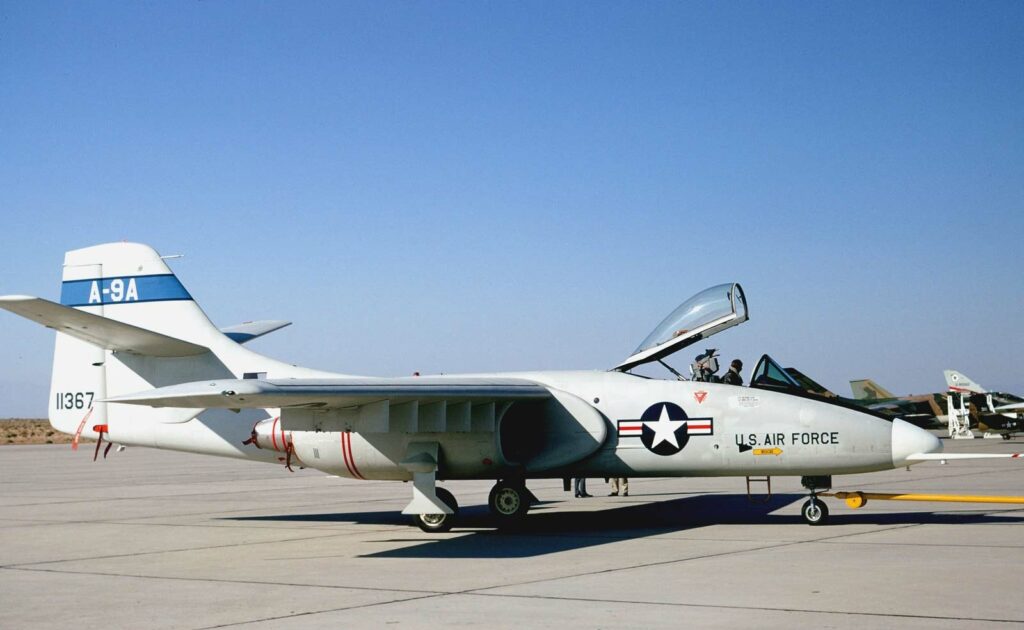The Northrop YA-9, an experimental aircraft, remains a less familiar chapter in aviation history, overshadowed by its successful competitor in the A-X program, the A-10 Thunderbolt II. Designed in response to the United States Air Force’s (USAF) need for a dedicated close air support (CAS) aircraft, the YA-9 was Northrop Corporation’s bid to fulfill this role. Despite its eventual loss in the competition, the YA-9’s development journey and design offer insights into a pivotal era of military aviation development.
In brief
The Northrop YA-9 was a prototype ground attack aircraft developed in the early 1970s for the USAF’s A-X program. It featured straight wings for enhanced low-speed maneuverability and short takeoff and landing capabilities, essential for close air support missions. Powered by two General Electric TF34-GE-100 turbofan engines, the YA-9 was designed to be highly survivable on the battlefield with redundant systems and armored protection for the pilot and critical components. Its armament capabilities were centered around a 30 mm rotary cannon, with additional hardpoints under the wings for bombs, missiles, and other ordnance. Despite its promising features, the YA-9 was not selected for production, leading to only two prototypes being built and tested.

Development
The development of the Northrop YA-9 sprang from the USAF’s realization, based on Vietnam War experiences, of the acute need for a robust, dedicated CAS aircraft. This aircraft would need to provide effective support to ground troops while withstanding significant enemy fire. The A-X (Attack-Experimental) program was established to find a suitable aircraft, with requirements emphasizing survivability, loitering capability, and firepower. Northrop, among other manufacturers, entered this competition with the YA-9 in the early 1970s.
History of the Development of the Northrop YA-9
The genesis of the YA-9 can be traced to the late 1960s and early 1970s, a period when the USAF was actively seeking a new generation of CAS aircraft. The A-X program officially commenced, calling for design proposals that could meet the demanding specifications for close support roles. Northrop Corporation responded with the YA-9, which made its first flight on May 30, 1972. The aircraft was developed as a direct competitor to Fairchild Republic’s A-10 Thunderbolt II in a bid to win the A-X program contract.
The program’s launch by the USAF was influenced by the evolving nature of ground warfare and the recognition that jet fighters and bombers adapted for CAS roles were not as effective as a dedicated platform could be. The YA-9 was Northrop’s solution to these requirements, featuring a design focused on survivability, low-speed handling, and firepower.
Design of the Northrop YA-9
The Northrop YA-9 boasted a unique design optimized for the CAS role. Its straight-wing configuration provided excellent low-speed flight characteristics, crucial for precision ground attacks and short takeoff and landing capabilities. The aircraft measured 53 feet 7 inches in length, with a wingspan of 57 feet and a height of 17 feet 5 inches, showcasing a design that prioritized functionality and durability over speed.
The use of turbofan engines, rather than the more common turbojets, was a key aspect of the YA-9’s design. This choice aimed to enhance fuel efficiency for extended loiter times over the battlefield and reduce infrared signatures, lowering susceptibility to heat-seeking missiles. Additionally, the aircraft’s structure incorporated significant armor plating and redundant systems to protect the pilot and critical components from ground fire.
Despite these advantages, the YA-9 had drawbacks, such as its less powerful armament system compared to its competitor, which limited its effectiveness in certain CAS scenarios. Moreover, its design, while innovative, did not offer the same level of battle-tested survivability features that the A-10 eventually became famous for.
Performance of the Northrop YA-9
In terms of performance, the YA-9 was capable of reaching speeds up to 481 mph, with a service ceiling of 40,000 feet and a range of 800 miles. These characteristics made it a competent platform for a variety of CAS missions, capable of rapidly responding to support requests across different combat zones. Its two General Electric TF34-GE-100 turbofan engines provided a balanced mix of speed, efficiency, and low-altitude maneuverability.
Compared to the A-10, the YA-9 demonstrated competitive performance metrics; however, it ultimately fell short in the areas deemed most critical for the CAS role, such as weapon delivery precision and survivability enhancements that the A-10’s design emphasized.
Variants of the Northrop YA-9
The YA-9 program resulted in the construction of only two prototypes, with no further variants developed due to the program’s conclusion after the A-X competition. These prototypes were used for a range of tests to evaluate the design’s performance, survivability, and armament capabilities, providing valuable data that would influence future aircraft development.

Military Use and Combat of the Northrop YA-9
The Northrop YA-9 never saw military use or combat, as it was not selected for production following the A-X program evaluation. Its competitor, the A-10 Thunderbolt II, was chosen for its superior survivability features and combat effectiveness, relegating the YA-9 to a footnote in aviation history. Despite this, the data and lessons learned from the YA-9’s development and testing contributed to the advancement of aircraft design principles, particularly in the realm of CAS aircraft.
Recap
The Northrop YA-9’s journey through the A-X program competition is a narrative of innovation, design challenges, and the rigorous selection process that defines military aviation procurement. Although it did not enter service, the YA-9’s development highlighted the importance of dedicated CAS platforms and influenced future aircraft design philosophies. Its legacy, while subtle, underscores the continuous evolution of military aviation technology and strategy, shaping the capabilities and characteristics of future aircraft designed to support ground forces in combat environments.
Back to the experimental aircraft section.